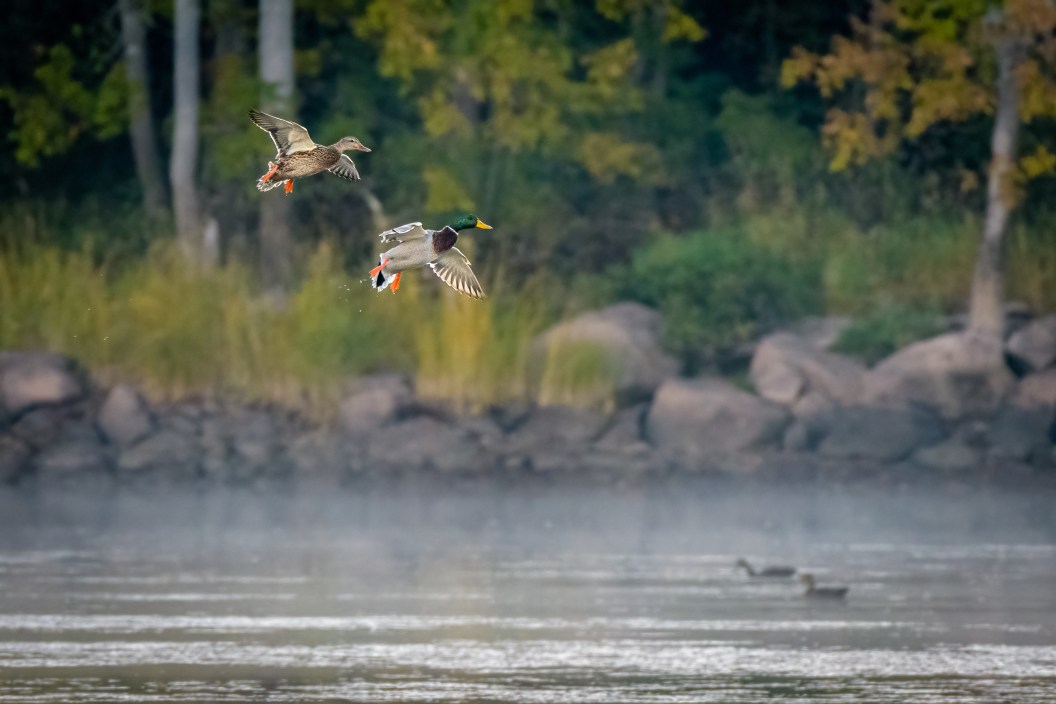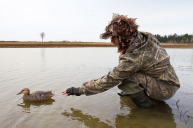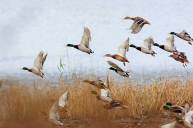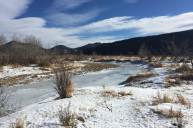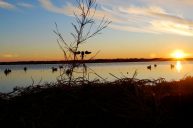Sitting in a duck blind, working on your duck calls, and waiting for the perfect bird can get old fast—especially if the ducks are bypassing your pond. But one duck hunter, @Huntercleve has come up with a creative solution: Craft a duck hole filled with a smorgasbord of food so ducks choose your pond over your neighbors.
He goes to these great lengths every year and this year, decided to share the process on his TikTok, which involves draining the pond, planting it with the crops ducks drool over, and then refilling it.
The first among a series of three videos was posted on April 30, where Huntercleve immediately states, "I'm gonna drain this pond, and we're going to see what's living in here."
The process may seem extreme, but it makes hunting on his property easier and the ducks get some good eats—a win-win if you ask us.
But the process garnered some serious pushback from the TikTokverse. The duck-hunting TikToker faced an onslaught of negative comments and backlash after simply sharing his process for draining his seasonal duck pond. Comments poured in, ranging from "So you're killing all life in it?" to "low-key illegal, but alright."
@huntercleve Draining A Pond For Duck Hunting
However, in the video, Huntercleve explains why he is draining the duck hole, which is to plant food for the ducks. For many, it may seem like he is coming at this the wrong way (which we'll get to in a second).
But the practice of draining ponds to till the soil and plant native and non-native plants aren't as far-fetched as it seems.
In fact, it's pretty common for private seasonal or man-made ponds. It's a great way to ensure wild ducks visit your watering hole on their mid-flight break instead of one down the road, hunting brand Mossy Oak says, adding the way to fetch a prize duck may be through its stomach.
That makes sense: Ducks love variety in their diet. The feathered omnivores will eat snails, earthworms, slugs, and fish to seeds, nuts, grasses, algae, and berries. Of course, what you plant in your duck pond depends on the type of ducks you want to attract and your season. Huntercleve mentions in his video that he wants to plant millet and possibly corn, which are perfect for the shallow portions of a pond. These two, mixed with natural grasses and pondweeds, will keep ducks well-fed.
Draining some of the water in the spring or summer is the best way for easy planting. Lower water levels also promote the growth of new plant life while attracting certain duck species such as wigeon, teal, mallards, and pintails. Oh, and in case you're wondering, doing it on your own property is perfectly legal.
@huntercleve Replying to @daltonricherson Part 2 on duck hole training clarification Ill keep y?all updated stay tuned
In a follow-up video, Huntercleve gives an in-depth explanation of the process: He says draining and planting take place when the ducks have migrated north. Then, he refills the pond before the ducks migrate south again for the winter. When our fowl friends reach the water, it will be filled with yummy plant life for them to eat. Once they migrate, the process will begin all over again.
Since the pond's primary use is attracting ducks, it is not stocked with fish—which should settle the hearts of the commenters who were worried what draining might do. He also points out that it's a seasonal pond and therefore, it will dry up on its own when summer temperatures peak. So, there aren't many creatures living in the water period.
@huntercleve Replying to @prissy*45
Part 3 in his series shows the end of draining the pond and ends many of the comment controversies. Huntercleve reiterated that it's a "waterfowl habitat" that would have been "dry by July" anyway. But he wanted to get a jump on planting before he flooded it in "late July." He said the only aquatic life was some crawdads. Huntercleve also points out that he did leave some water toward the back half of the pond for frogs who may want to stay in the area a little longer and for the crawdads. Unfortunately, a few of the crawdads didn't make it to the water and were gobbled up by some raccoons.
While the process was a little controversial with TikTok viewers, it does seem like an effective way to promote sustainability. Huntercleve vows to continue to post updates throughout the summer if viewers want to learn more about planting for a duck's diet.
